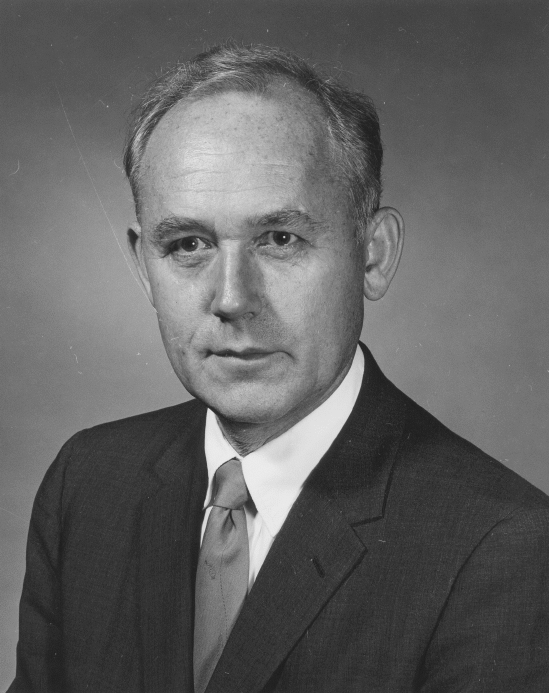
Kaj Aage Strand, Scientific Director of the U. S. Naval Observatory from 1963-1977, died October 31 at the Manor Care Nursing Home in Washington, D.C. He was 93. During a long and distinguished career, he specialized in positional astronomy, especially work on double stars and stellar distances. He was responsible for the design and construction of the Navy's 61-inch telescope in Flagstaff Arizona, now known as the Strand Astrometric Telescope.
Dr. Strand was born February 27, 1907 on the outskirts of Copenhagen, Denmark. He entered the University of Copenhagen in 1926, majored in astronomy, and graduated in 1931 with Magister (Master's) and Candidate Magister degrees. At the invitation of Ejnar Hertzsprung, during the 1930s he worked at Leiden on a program of photographic double stars; he applied these results toward his doctorate from Copenhagen in 1938. From 1938-42 Strand worked under Peter Van de Kamp as a Research Associate at Swarthmore College, and began the photographic double star program with the 24-inch telescope. During the War he entered the U.S. Army, and then the U.S. Army Air Force, and flew as a Captain and chief navigator on B 29 tests. As head of the Navigation Department he was involved in operational training of special air crews, including the first atomic bomb crew.
After the War Strand returned briefly to Swarthmore, and in 1946 began as an associate professor at Yerkes Observatory. In the same year he became chairman of the astronomy Department at Northwestern University, and was responsible for planning the University's new computer center. In 1958 Strand accepted a position as head of the Astrometry and Astrophysics Division at the U.S. Naval Observatory, rising to the position of Scientific Director in 1963. He pioneered in the determination of stellar distances using reflecting telescopes, and was primarily responsible for the design and construction of the 61-inch astrometric telescope, dedicated in 1964 at the Observatory's station in Flagstaff, Arizona; it has served as the premier telescope for stellar distance determination since that time.
Dr. Strand is survived by his wife, Emilie, and daughters Vibeke and Kris.
Steven Dick
Historian
U. S. Naval Observatory